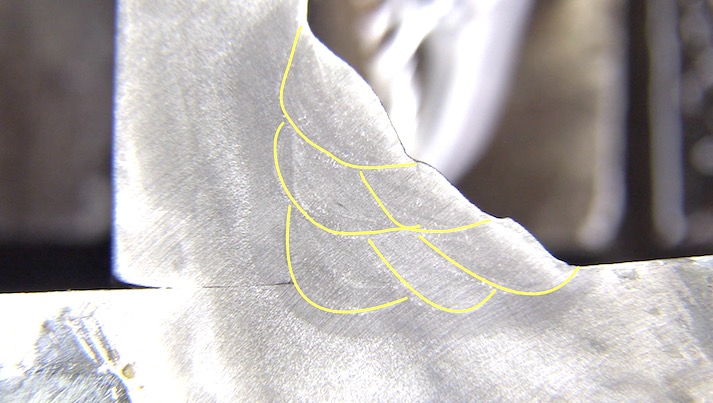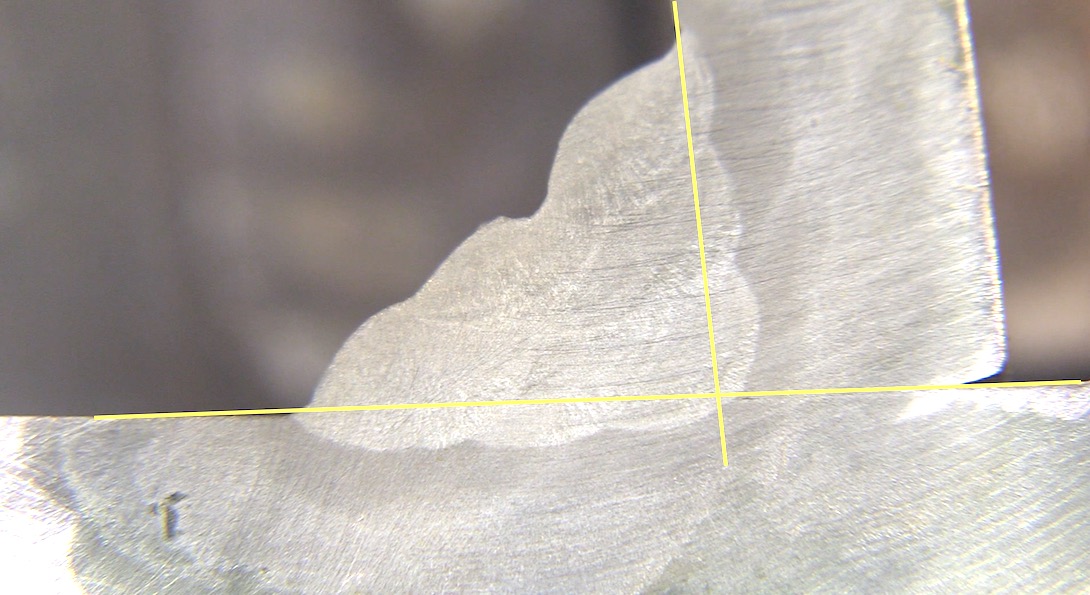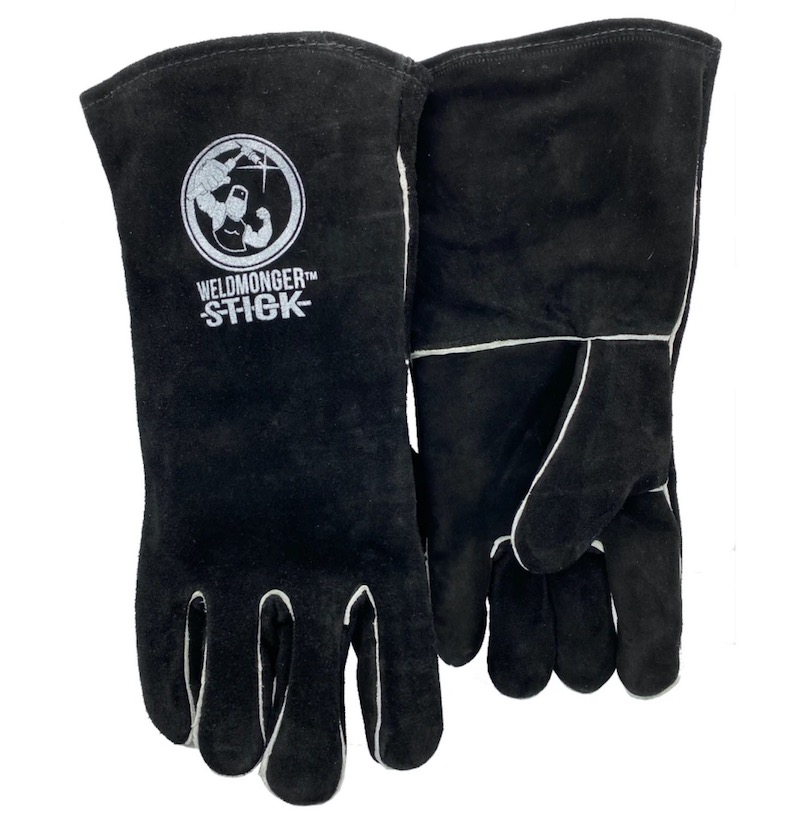Esab 7018 vs Hobart 7018
This page is about stick welding using 1/8" (3.2mm) Esab 7018 along side Hobart 7018 on a 3F multipass Tee Joint.
I tried to keep things even by giving each bead time to cool off before the next bead but my shaking a bit probably had an effect on everthing.
check out the new stick welding gloves
I set the machine to 120 amps for the first pass and decided to label the 12" Tee joint with an E on the top half and an H on the bottom.
I welded the top portion first using the Esab 7018 and the bottom using the Hobart electrode.
Right away it seemed like the esab 7018 would run better with 5 to 10 more amps.
That is a pretty common thing. Different brand electrodes run better at different amperages.
In fact, you will notice at the beginning of the video on this page, that the amperage range for each electrode was very different.
The Esab 7018 range was from 110-140 while the Hobart 718 listed the amperage range at 90-150.
I settled on 120 amps for the first pass because have found that if I go hotter, I get too much arc blow toward the end of a rod.
Arc blow is a magnetic field that happens while welding current is passing thru the metal and it seems to make a diference on where the ground is attached.
That is why I attached an additional jumper ground to the top of the Tee.
CLAMS stands for Current, Length of Arc, Angle, Manipulation, and Speed of travel
At the risk of sounding like a broken record...
A way to remember all the essential things is the Acronym CLAMS
Current= Voltage, Amperage, Polarity
Voltage is determined by power source and arc length
Amperage is set on the dial but is also affected by arc length
Polarity is set on machine so make darn sure the leads are connected properly. for 7018 electrodes, DCEP is usually what is called for but AC works too...usually
Length of Arc - set amperage hot enough to where you can hold a tight arc without sticking the rod...then hold a tight arc
Angle = Angle of electrdoe is more forgiving when you hold a tight arc length but dont get carried away with electrdoe angle. I aim for a 90 degree straight in angle but seem to always havce a slight push angle without realizing it.
Manipulation - some welding procedures stipulate a maximum bead width but like to use some type of electrode manipulation even it the motion is small and hardly perceptable.
Speed of Travel - by using a series of very small triangles, I am usually able to keep my travel speed pretty steady.
Cut & Etch test comparing Esab 7018 to Hobart
Esab 7018

hobart 7018















